Confederate Truths: Documents of the Confederate & Neo-Confederate Tradition from 1787 to the Present.
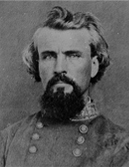

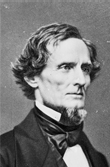
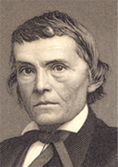

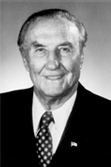
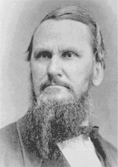
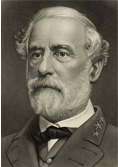
Segregation vs. The Supreme Court, Sept., Oct., Nov. 1958
This article ran for three issues, September 1958, pages 29, 36; October 1958, pages 29, 32, 33; and November 1958, pages 15, 27, in the United Daughters of the Confederacy Magazine. I have put the footnotes at the end of each month's installment of the article. The original text had footnotes at the bottom of the columns, instead of at the bottom of the page, and not necessarily under the column they appeared. Also, the footnotes are not numbered in sequence in the original text. The magazine U.S. News & World Report is referenced numerous times in the footnotes as since this publication was an opponent of the civil rights movement.
All emphasis in the original text. Errors in the original were only corrected where it was felt necessary for clarity and it was fairly clear what the error was.
Segregation Vs The Supreme Court
FOREWORD
It is the sincere hope, of the authors that the reader has obtained a better understanding of the problem of segregation in the schools from this research paper. It is believed that only the bigot, after reading this paper, will contend that his is the only side of the question. For as Oliver Wendell Holmes, the great Jurist, so aptly remarked: "The mind of the bigot is like the pupil of the eye; the more light you pour upon it, the more it will contract."68 Despite the final conclusion drawn by the reader, it must be admitted, we believe, that Americans everywhere will agree to the statement made by the Honorable LeRoy Collins, Governor of the State of Florida, in his inaugural address: "We have a state to build, a South to save, a nation to convince, and a God to serve."69
By Raymond Culver Bender and Max S. Gelders West Palm Beach, Fla.
On May 17, 1954, the United States Supreme Court ruled that racial segregation in the public schools is unconstitutional. This is a well known fact. Not so well-known is the reason given by the Court for its decision:
We conclude that in the field of public education the doctrine of "separate but equal" has no place. (The "separate but equal" doctrine was established by the Supreme Court in Plessy v. Ferguson, 163 U. S. 537, in 1896.) Separate educational facilities are inherently unequal. Therefore, we hold that the plaintiffs and others similarly situated for whom the actions have been brought are, by reason of the segregation complained of, deprived of the equal protection of the laws guaranteed by the Fourteenth Amendment.1
This decision, in effect, wiped segregation laws off the books in twenty-one states.2 This is not the first time the Supreme Court has invalidated statutes of the states. Seventy-six such statutes were nullified up to 1937,3 and others have been since. Nevertheless, controversy immediately flared over the legality and wisdom of the Court's decision. The problem of racial segregation goes hand in hand with the problem of assimilating the Negro in American society. How did this problem have its beginning? In order to answer this pertinent question it is first necessary to delve into the history of the migration of the Negro to America and his progress upward from the depths of slavery to an equal footing with his white neighbor. The first record of Negroes in the English colonies dates back to 1619 when twenty Negro slaves were landed and sold in Jamestown, Virginia.4 Slavery soon centered in the South because the Negroes could be profitably used in raising cotton and tobacco and the climate was similar to that of their native home.5 Opposition to slavery began early. Rhode Island led the way in 1652 with a law prohibiting the holding in slavery of any person, white or black, for more than ten years after having reached the age of twenty four.6 Legislation in other colonies took the form of prohibiting the importation of slaves into those colonies.7 Thus, it seems that the overzealous Abolitionists were preceded by sincere efforts on the part of most colonists to abolish or strictly regulate the evil of slavery. The South prospered during the early days of slavery. Then came the War of Independence and many American patriots argued that slavery was inconsistent with the ideals for which the colonists had been fighting.8 In the early 1800's a movement arose in the North to agitate for the abolition of slavery. Whites and free Negroes of the North were not alone in their opposition to slavery; numerous Southern whites also displayed a spirited opposition to this institution.9 Nor were all slave-holders white. It has been estimated that 6,200 free Negroes in this country owned approximately 18,000 Negro slaves in the antebellum era.10 Contrary to popular belief three-fourths of the, Southern whites were poor, owned few or no slaves, and lived miserably on small farms. The planters and slaves alike looked down on the shiftless "poor white trash."11 Along came "Uncle Tom's Cabin," a novel severely critical of Negro slavery. Harriet Beecher Stowe's picture of slave life in the South was harsh and overdrawn, but the North fell for it "hook, line, and sinker."12 Then came the crucial turning-point. The Southern states' act of secession and the Federal Government's determination to keep these states in the Union precipitated the War Between the States.
At the conclusion of this war eleven states were humbled under the boot of Union troops. Under the Thirteenth Amendment the Negro slaves were freed, 13 and under the Fifteenth Amendment the Negroes were given the right to vote.14 Almost immediately carpetbaggers began vying for the votes of the newly freed Negroes.
The effort to confer immediate and full citizenship upon one million men just out of slavery was a political and social blunder, working grievous wrongs to whites and blacks alike, and the more so that the federal government had no plan or power at the time to provide for the education of the freed men in the meaning and responsibilities of that citizenship.15
Despite the chaos resulting from the immediate granting of citizenship to the emancipated Negro slaves, there were sincere efforts on the part of the Federal Government to better the lot of the Negro. A Freedman's Bureau was created to provide for Negro education, among other things. Several modern Negro colleges among them Fisk University, Howard University, and Hampton Institute, grew out of the work of the Freedmen's Bureau.16
Since 1916 there has been a steady migration of Negroes to the Northern states.17 Today in the United States there are 12,865,518 Negroes.
Their numbers have grown steadily but not so fast as the rest of the population. In 1790 Negroes made up nearly one-fifth of the American people. Today they make up less than one-tenth of the population.18 Georgia, with 1,084,927 Negroes, has the largest colored population of any state in the Union.19 Due to the fact that the Negroes comprise the largest racial minority in the South, thinking men have come to realize that the Negro must be raised to an equal level with the whites. Some people contend that the Negro is inferior mentally. Others argue that the Negro has just as much capacity for learning as the white. Let us not jump to conclusions. It is far better to consider the opinion of a man who should know.
68. Tryon Edwards, "The New Dictionary of Thoughts," New York, Standard Book Company, 1955, p. 49.
69. Anonymous, "What Three Southern Governors Say About Mixing Schools," U. S. News and World Report, (January 25,1957), p. 116. the laws guaranteed by the Fourteenth Amendment.1
1.Anonymous, Answers for Action-Schools in the South, Atlanta, Southern Regional Council, June, 1954, p. 24.
2. Anonymous, "Supreme Court," World Book Encyclopedia, 1955 Annual Supplement, p. 223.
3. Ernest Angell, Supreme Court Primer, New York, Reynall & Hitchcock, 1937, p. 34.
4. Guy Stanton Ford, "Negro," "Compton's Pictured Encyclopedia," 1947 edition, X, p. 62.
5. James Hastings, "Negro," "Encyclopaedia of Religion and Ethics," 1951 edition, VI, P. 293.
6. Ibid., p. 293. 7. Ibid., p. 293.
8. Anonymous, "History of the Negro in America," Colliers Encyclopedia, 1957 edition, XIV, p. 461C.
9. Ibid., p. 461D.
10. James Hastings, op. cit., p. 293.
11. Guy Stanton Ford, "U.S. History," Compton's Pictured Encyclopedia. 1947 edition, XII, p. 244.
12. Ibid., p. 243.
13. Anonymous, "U. S. Constitution," Wor1d Book Encyclopedia, 1953 edition, XVII, p. 8372.
14. Ibid., p. 8373.
15. James Hastings, op. cit., p. 293.
16. Anonymous, "Negro," World Book Encyclopedia, 1953 edition, XII, p. 5487-5488.
17. Edwin R. A. Saligman, "Negro Problem," Encyclopedia of the Social Sciences, VI, p. 342.
[Continued in the October U.D.C. Magazine]
What is the Law of the Land? According to Article Six of the United States Constitution:
This Constitution, and the Laws of the U.S. which shall be made in Pursuance thereof; and all Treaties made or which shall be made, under the Authority of the United States, shall be the supreme Law of the Land; and the Judges shall be bound thereby . . .21
However, Chief Justice Charles Evans Hughes disagreed with this concept, "We are under a constitution, but the constitution is what the judges say it is."22 This difference of opinion as to whether or not the Supreme Court has the power of interpreting the Constitution has been debated throughout our Nation's history. George Mason, a delegate from Virginia to the Constitutional Convention, predicted what would happen if the Court were given the power of interpretation: ". . . Supreme Court of the United States could substitute it own pleasure for the law of hand; . . . errors and usurpations of the Supreme Court of the United States would be uncontrolled and remediless."23
Where did the Court get the power of interpretation that it exercises today? This question has been asked by many men since 1803 when in the case of Marbury V. Madison the Supreme Court first ruled an act of Congress unconstitutional. No English court for more than two hundred years has held an act of Parliament unconstitutional.
Their numbers have grown steadily but not so fast as the rest of the population. In 1790 Negroes made up nearly one-fifth of the American people. Today they make up less than one-tenth of the population.18 Georgia, with 1,084,927 Negroes, has the largest colored population of any state in the Union.19 Due to the fact that the Negroes comprise the largest racial minority in the South, thinking men have come to realize that the Negro must be raised to an equal level with the whites. Some people contend that the Negro is inferior mentally. Others argue that the Negro has just as much capacity for learning as the white. Let us not jump to conclusions. It is far better to consider the opinion of a man who should know:
Regardless of our emotional attachment to the school-desegregation problem, certain facts must be faced. First, as far as psychological-test performance is a measure of capacity for education, Negroes as a group do not possess as much of it as whites as a group. This has been demonstrated over and over. Next, we must realize that, since 1918, the vast improvement in the social and economic status of the, Negro have not changed his relationship to the whites regarding capacity for education. This is not to say that this relationship cannot be changed; it says merely that it has not been changed. It implies strongly that we are approaching the race-difference problem from the wrong direction.20
Thus far we have recounted the history of the problem of segregation. Now we will proceed with the matter at hand.
Such authority had not been exercised by any English court for seventy-five years prior adaption of the Federal Constitution.24 Did the founding fathers intend to confer such power then unknown? In Article Three of the Constitution our forefathers established the Supreme Court. Nowhere in this Article is the Court given the power of interpretation which it holds today.25 The Court is limited by the very document from which it receives its power. We find in Article Three of the Constitution: "The judicial power of the United States shall be vested in one Supreme Court, and in such inferior courts as the Congress may from time to time ordain and establish."26 The power to set aside or nullify an act of Congress or of a state legislature is purely a political power and is so recognized by the constitutions which give the power of veto to the Executive. The power of nullification comes under no definition or conception of the judicial power which is to judge between the parties to a controversy.27 It may be asked what was the intent of the founding fathers with regard to the Court's power. A definite proposal to grant the Court the power to review the acts of Congress and of the states was rejected four times during the Constitutional Convention.28
The power of interpretation is a dangerous power. It may well be abused as Alexander Hamilton warned: "The courts must declare the sense of laws; and if they should. be disposed to exercise Will instead of Judgement, the consequence would equally be the substitute of their pleasure to that of the legislative body."29 Thomas Jefferson in 1820 disapproved of giving to the Supreme Court the power of interpretation. "To consider the judges as the ultimate arbiters of all constitutional questions (is) a very dangerous doctrine indeed, and one which would place us under the despotism of an oligarchy."30 In his first inaugural address Lincoln questioned the power of the Supreme Court:
At the, same time, the candid citizen must confess that if the policy of the government, upon vital questions affecting the whole people, is to be irrevocably fixed by decisions of the Supreme Court, the instant they are made, in ordinary litigation between parties in personal actions, the people will have ceased to be their own rulers, having to that extent practically resigned their government into the hands of that eminent tribunal.31
The validity of the Fourteenth Amendment upon which the Supreme Court based its decision has been questioned time and time again. Before concluding whether or not the amendment in question is valid, it is necessary to go into the history of its dubious ratification.
When Congress first proposed the Fourteenth Amendment to the states for their approval, ten Southern states were not represented in Congress.32 In order for an amendment to be added to the Constitution three-fourths of the states must ratify it.33 There were thirty-seven states in the Union at this time. Since three-fourths of the states must ratify an amendment before it becomes law, twenty-eight states would have had to ratify the Fourteenth Amendment for it to become valid. The ten former Confederate states rejected the Amendment when it was first proposed. California never did ratify this Amendment. The states of Kentucky, Delaware, and Maryland at this time. Thus, only twenty-three states approved it.34 This was not sufficient to legally ratify the Amendment. The Radical Republicans in Congress were not willing to allow the Southern states their freedom of choice. The Reconstruction Act passed by Congress on March 2, 1867, gave the "rebel states" the choice of ratifying the Amendment and gaining representation in Congress or not ratifying the Amendment and submitting to indefinite mi1itary rule.35 Faced with this "choice" the Southern states reluctantly ratified the Fourteenth Amendment.
Because of the gloomy alternative given the Southern states, the Oregon legislature passed a rescinding resolution in October, 1868, argued that the "ratification" in the South were "usurpations, unconstitutional, revolutionary, and void."36 Andrew C. McLaughlin in his "Constitutional History of the United States" brings out, some pertinent questions:
Can a State which is not a State and not recognized as such by Congress, perform the supreme duty of ratifying an amendment to the fundamental law? Or does a State—by congressional thinking—cease to be a State for some purposes but not for others?37
It cannot be denied that the Southern states were literally forced to ratify the Fourteenth Amendment, such action rendering the Amendment void. The Supreme Court in another case (Frost Trucking Co. V. Railroad Commission) where a similar "choice" was required, decided that an exercise of one constitutional right may not lawfully be conditioned upon the surrender of another right. In that decision the Court speaks of such a choice as "requiring a surrender, which, though in form voluntary, in fact lacks none of the elements of compulsion."38 After all the facts presented, can anyone still contend that the Fourteenth Amendment is valid?
Let us assume, however, that the Fourteenth Amendment is valid. Does this justify the High Court's ruling?
In the last four years the sound rule of giving statutes the benefit of all reasonable doubt has been cast aside. The Court has been acting not as a judicial body, but as a policy-making body. The Court in addition to the proper use of its judicial functions has improperly set itself up as a third House of the Congress—a superlegislature, as one of the Justices has called it — reading into the Constitution words and implications which are not there, and which were never intended to be there.39
The preceding statement was not made by a pro-segregationist running for political office in the Deep South. It was made by the late Franklin D. Roosevelt, a liberal, in a radio address to the nation on March 9, 1937.40 President Roosevelt recognized twenty years ago that the Supreme Court was unwilling to remain within its constitutional limits and was molding itself into a policy-making body superior to both the Congress and the people. An amendment to the Constitution must be passed by two-thirds of each House of Congress and ratified by three-fourths of the states.41 In March, 1956, the Court ruled (Ullman v. U.S.) that "nothing new can be put into the Constitution except through the amendatory process."42 This was in apparent contradiction to the stand taken by the Court in 1954 when it read into the Fourteenth Amendment "words and implications which are not there, and which were never intended to be there."
The High Court declared in its unprecedented decision that "we cannot turn the clock back to 1868 when the amendment was adopted, or to 1896 when Plessy v. Ferguson was written."43 Then why had the Court asked counsel in 1953 to file briefs as to the intent of the Congress in 1868? And why had the Court asked counsel to debate whether the Court was bound by its previous decisions?44 If the Court could not turn the clock back to consider the intent of the drafters of the Fourteenth Amendment, what chance is there of the Court turning the clock back to 1787 when the Constitution was drafted? If age so outmodes the accepted laws of the Constitution, what chance would the Ten Commandments have with the present Court? The Supreme Court's controversial ruling upset the "separate but equal" principle which was established in the Plessy v. Ferguson case in 1896 and sustained by the Court thereafter in seven cases.45 The Supreme Court in 1954 asked if the Congress that proposed the Fourteenth Amendment had intended that segregated schools should be prohibited. In 1868 Members of Congress submitted proposals to outlaw segregated schools which were rejected. These facts were presented before the Court in 1954; nevertheless, the Court declared the legislative history of the Fourteenth Amendment to be "inconclusive."46 Was it the purpose of the Amendment to forbid segregated schools?
18. Anonymous, "Negro," World Book, op. cit., p. 5488.
19. Anonymous, "Negroes in the U. S.," The New Funk and Wagnalls Encyclopedia, XXIV, p. 8832.
20. Dr. Frank C. J. McGurk, "A Scientist's Report on Race Differences," U. S. News and World Report, (September 21, 1956), p. 96.
21. Guy Stanton Ford, "U. S. Constitution," op. cit., p. 216.
22. Ernest Angell, op. cit., p. 32.
23. Herman E. Talmadge, "You and Segregation," Birmingham, The Vulcan Press Inc. 1955, p. 6.
24. Dormin J. Ettrude, "Power of Congress to Nullify Supreme Court -decisions," New York H W. Wilson Company, 1924, pp. 45-46.
25. Guy Stanton Ford, "U. S. Constitution," op. cit., p. 215.
26. Anonymous, "Supreme Court of the U.S.," World Book Encyclopedia, 1953 edition, XV, p. 7814.
27. Dormin J. Ettrude, op. cit., p. 44.
28. Ibid., p. 5.
29. Anonymous, "How Much Power Does A Judge Really Have?" U. S. News & World Report, (February 15, 1957), p. 82.
30. David Lawrence, "An Editorial By Thomas Jefferson," U.S. News & World Report, (August 2, 1957), p. 112.
31. David Lawrence, "An Editorial By Abraham Lincoln," U. S. News & World Report, (August 9, 1957), p. 120.
32. Walter J. Suthon, Jr., "The Dubious Origin of the 14th Amendment," U.S. News & World Report, (July 20, 1956), p. 59.
33. Anonymous, "U. S. Constitution," World Book Encyclopedia, 1953 edition, XVII, p. 8369.
34. Walter J. Suthon, Jr., op. cit., p. 60.
35. Ibid., p. 60.
36. David Lawrence," There Is No. Fourteenth Amendment!" U. S. News & World Report, (September 27, 1957), pp. 139-140.
37. Anonymous, "Was The 14th Amendment Ever Really Ratified?" U. S. News & World Report, (July 20, 1956), p. 57.
38. Walter J. Suthon, Jr., op. cit., p. 61.
39. David Lawrence, "An Editorial By Franklin D. Roosevelt," U. S. News & World Report, (August 16, 1957), p. 140.
40. Ibid., p. 140.
41. Guy Stanton Ford, "U. S. Constitution," op. cit., p. 216.
42. James F. Byrnes, "The South Respects the Written Constitution," Vital Speeches of the Day, XXIII-11, (March 15, 1957), p. 331.
43. Ibid., p. 332
44. Ibid., p. 332
45. Ibid., p. 332
46. Ibid., p. 331
[Continued November U.D.C. Magazine]
If so, the people living at the time did not realize it, for twenty-three of the first thirty states to gratify this Amendment continued, or adopted soon after, statutory or constitutional provisions which provided for racial segregation in the public schools.47 Perhaps the Congress that proposed the Fourteenth Amendment did intend to abolish segregated schools. If this were so, however, why did Congress establish segregated public schools in the District of Columbia not long after the Amendment was ratified?48 Since the Fourteenth Amendment was adopted, there have been, some brilliant and capable jurists sitting on the bench. Not once did these Justices suggest that racial segregation was a violation of the Fourteenth Amendment. Were these judges dishonest, negligent, incompetent, or did they lack knowledge which by an act of God has been bestowed upon the present Court? In the case of Smith v. Allwright the majority of the Justices seemed to feel that they possessed knowledge which had been denied to their predecessors. This was contrary to the opinion of Justice Owen Roberts:
This tendency, it seems to me, indicates an intolerance for what those who have composed this Court in the past have conscientiously and deliberately concluded, and involves an assumption that knowledge and wisdom reside in us which was denied to our predecessors.49
The present Court contradicts its predecessors.
A decade ago in the case of Fay v. The People of the State of New York with reference to the fifth section of the Fourteenth Amendment the United States Supreme Court observed:
It is not said the judicial power of the General Government shall extend to enforcing the prohibitions and to protecting the rights and immunities guaranteed. It is not said that branch of the Government shall be authorized to declare void any action of a State in violation of the prohibitions. It is the power of Congress which has been enlarged. Congress has been authorized to enforce the prohibitions by appropriate legislation.50
Some people adhere to the fallacious belief that the present Justices are infallible and their decision the "law of the land." They stand in awe of the High Court. They throw a cloak of sacredness around the Courts' integration ruling. This is not the first time people have attempted to place a decision of the Supreme Court above reproach. This was done with regard to the Dred Scott decision a century ago. Abraham Lincoln expressed his opinion on this point:
The sacredness that Judge Douglas throws around this decision is a degree of sacredness that has never been before thrown around any other decision. I have never heard of such a thing. Why, decisions apparently contrary to that decision, or that good lawyers thought were contrary to that decision, have been made by that very Court before. It is the first of its kind; it is an astonisher in legal history. It is a new wonder of the world.51
Although these words were uttered by Abraham Lincoln over a century ago, they are just as true today.
As late as 1952, the Court in the case of Beauharnais v. Illinois said: "It is not within our competence to confirm or deny claims of social scientists as to the dependence of the individual on the position of his racial or religious group in the community."52 Yet only two years later the High Court could not cite a single legal precedent in support of its decision. Instead it cited only the writings of a group of psychologists and sociologists, several of whom had been declared by the House Un-American Activities Committee and by the Department of Justice to be subversive.53 Since the Supreme Court ruling was not based on legal precedent but on the findings of sociologists and psychologists, is that ruling legal? Dr. Rupert B. Vance, Professor of Sociology, University of North Carolina, states: "It must be remembered that issues will be decided, not on the basis of an assumed code of ethics, but on the basis of what is enforceable within the system of legality."54 The Court would do well to heed the advice given by Dr. Vance. Perhaps in the near future the High Court will realize that unless a decision is based on legal precedent rather than on the disputed findings of social scientists, that decision will not gain the respect of the people, much less their wholehearted support.
Has the Supreme Court invaded the sovereign rights of the states?" The Court, when it included such great judges as Chief Justice Taft, and Justices Holmes, Brandeis, and Stone, said that segregation had been "many times decided to be within the constitutional power of the State legislatures to settle without interference of the federal courts under the Federal Constitution."55 Again, in 1927 (Lum V. Rice) the High Court speaking through Chief Justice Taft unanimously declared that the "separate but equal" principle is" . . . within the discretion of the State in regulation its public schools and does not conflict with the Fourteenth Amendment."56 In one case Chief Justice Charles Evans Hughes said that the question of whether segregation is constitutional could "no longer be considered an open one."57 The ruling of the Court in 1954 completely contradicted these previous opinions of the Supreme Court.
Immediately after the 1954 ruling President Eisenhower expressed his desire that the District of Columbia would integrate its public schools and hold them out as a model for the rest of the country to follow.58 The schools of the District of Columbia have been anything but a model.
In the opinion of C. Melvin Sharpe, president of the District of Columbia Board of Education, rapid integration of Washington schools has caused great difficulties.59 In testimony before the House subcommittee on the District of Columbia, the principal of Eastern High School (Washington) testified:
Virtually all social activities were abandoned in Eastern (High School) after integration. This move was initiated by the white students, and was a great loss to the school, because prior to integration they had a very happy and extensive social setup.60
Integration "has not been a success," according to Mrs. Katherine Reid, a teacher at Tyler Elementary School, in her testimony before the House sub-committee.61 This, of course, referred to the compulsory integration of Washington schools. Are the white people leaving Washington? According to the House subcommittee on the District of Columbia, "One situation of great concern to the nation is the fact that the white population is leaving Washington."62 They further stated:
The exodus of white residents from the District of Columbia was accelerated by the persistent agitation for school integration which culminated in the ruling by the Supreme Court. (Integration in the schools) caused a great many of the white residents to move to the suburban areas and into the States of Maryland and Virginia.63
It seems that compulsory integration has failed in Washington.
On September 10, 1957, Louisville, Kentucky, integrated its schools without trouble.64 This was due to the farsightedness of Dr. Omer Carmichael, Superintendent of Louisville schools. Almost a year before the Louisville schools were integrated, Dr. Carmichael gave his interpretation of the Supreme Court ruling:
The Supreme Court merely held that compulsory racial segregation is unconstitutional. Now, I honestly believe that the decision of the Court is complied with even if there were absolutely no mixing of Negro and white children, provided that situation is the choice—the free choice—of the parents.65
Voluntary integration in Louisville schools has been successful because it is consistent with the American ideal of freedom of choice. The principle of voluntary integration was upheld by a Federal Court in South Carolina which, in reference to the High Court's ruling on segregation, declared: "It has not decided that the States must mix persons of different races in the schools or must require them to attend schools or must deprive them of the right of choosing the schools they attend."[66] The proposal has been made to maintain a school for both whites and Negroes, a school for whites only, and a school for Negroes only. [67]
Thus, the child would be allowed to elect the school of his choice. Whether or not such a school system would be feasible and economical is beside the point; it is certain that such a system would constitute compliance with the Supreme Court ruling of May 17, 1954, outlawing racial discrimination in the public schools. Perhaps this is the answer for those who wish to preserve segregation. At any rate, the "tri-school system" can be the alternative to complete integration until the Supreme Court declares it unconstitutional, which is highly improbable. Let us hope their future rulings will not be as unprecedented and injudicious as that delivered on May 17, 1954.
47. Herman E. Talmadge, op. cit., p. 51.
48. Ibid., p. 51.
49. James F. Byrnes, "The Supreme Court Must Be Curbed," U. S. News and World Report, (May 18, 1956), p. 54.
50. James F. Byrnes, "The South Respects the Written Constitution," op. cit., p. 332.
51. David Lawrence, "An Editorial by Abraham Lincoln," op. cit., p. 120.
52. James F. Byrnes, "The Supreme Court Must Be Curbed," op. cit., p. 53.
53. James F. Byrnes, "The South Respects the Written Constitution," op. cit., p. 32.
54. Anonymous, Segregation-Florida, Tallahassee, October, 1954, p. 90. 55. James F. Byrnes, "The Supreme Court Must Be Curbed," op. cit., p. 51.
56. Anonymous, "South Closes Ranks On Race Issue," U. S. News and World Report, (March 16, 1956), pp. 38-39.
57. James F. Byrnes, "The South Respects the Written Constitution," op. cit., p. 332.
58. Anonymous, "How Mixed Schools Are Working In Washington," U. S. News and World Report, (September 28, 1956 ), p. 98.
59. Ibid., p. 99.
60. Ibid., p. 101. 61. Ibid., p. 106. 62. Anonymous, "What Happened In Washington When Schoo1s Were Mixed," U. S. News and World Report, (January 4, 1957), p. 94.
63. Ibid., p. 95.
64. Dan Golenpaul, "Segregation & Desegregation," Information Please Almanac; 1957 edition, p. 20. 65. Anonymous, "Is Voluntary Integration The Answer?" U. S. News & World Report, (October 5, 1956), p. 46.
66. David Lawrence, "What Is The Law Of The Land?" U. S. News & World Report, (October 5, 1956), p. 152.
67. Anonymous, New South, Atlanta, Southern Regional Council, IX-9, September, 1954, p. 3.
(Other Bibliography Information Available On Request)
[The above was a note in the original article.]